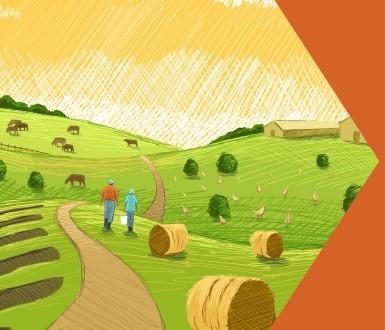If you are a grower, work for an agency, non-profit organization, or business that intersects with agriculture, the document you’ve been waiting for is now available. The results of the every-five-year federal census of agriculture came out months ago, but now you can make use of an easier-to-read version of the results for Massachusetts. Our website now offers an overview of the results of the 2017 Census in Massachusetts. We are grateful to the Department of Resource Economics at UMass Amherst who prepared these user-friendly documents.
What Can You Find?
Compare and contrast data about farms over the past 10 years to see what has changed in terms of acres, number of farms and market value of products. For example, below you will the top five number of farms in 2017 and then can compare and contrast these figures with the 2012 census to see how these numbers are changing.
Hay Farming 1,001 farms
Vegetables and melons 908 farms
Horse and other equine 892 farms
Fruit, tree nuts and berries 845 farms
Greenhouse, nursery and floriculture 777 farms
What Else Can You Learn?
In 2017, the Agricultural Census changed the way it counts the people who run a farm. To better capture the roles of multiple operators involved in decision-making, the 2017 Census allowed respondents to identify up to three Principal producers. To bridge the gap between 2017 and previous years, the Census uses a complex statistical edit to identify a single Primary Producer from among the identified principals. This is a change from previous census years, when respondents were asked to identify one Principal Operator.
One Change is Farm-Hers
Massachusetts looks quite different from the U.S. where only 13.7 percent of the principal farm operators are women. The number of female principal farm operators/producers has increased during the past decade (Figure 6.1). Female principal farm operators increased between 2002 and 2007 by 921 and between 2007 and 2012 by 281. Women represented 21.5 percent of the Massachusetts principal farm operators in 2002. By 2012, that proportion rose to 32.3 percent.
Farm Real Estate Values
Massachusetts farmland was worth $10,800 per acre in 2017, fourth in the nation to Rhode Island ($14,900 per acre) and Connecticut ($12,100 per acre). Massachusetts farmland values grew at an annual rate of 5.2 percent from 1995 through 2017.
Renewable Energy on Massachusetts Farms
In 2012, 465 farms had an on-farm renewable energy producing system, about 6 percent of all farms. By 2017 this number grew to 1,435 farms out of 7,241 or 19.8 percent of all farms. Of these systems, most were solar panels.
There is much more in this meaty report. Take a look at this news you can use.
